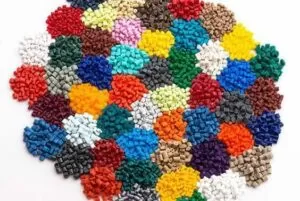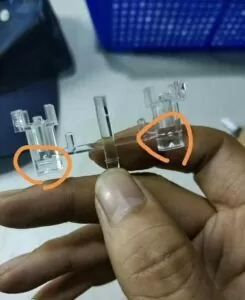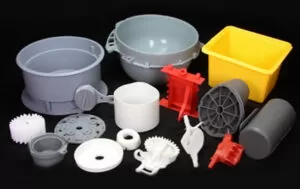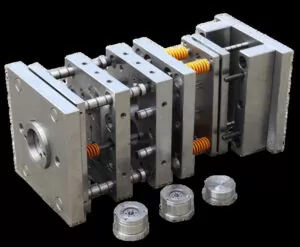Pad printing basic concepts
Pad printing refers to the need to print the pattern etched on the steel plate (steel), through the pad printing machine oil reel back to the oil, the knife frame combination drop.
The pad printing ink outside the etched pattern of the steel plate back into the oil basin, and then through the adhesion of the glue head, the pattern will be completely panned on the substrate, that is, the completion of the entire printing made.
Pad printing process
With the help of the deformable pad printing head to complete the transfer of ink layer, the pad printing head surface does not contain graphics; the need for graphics first sun and etched into the pad printing intaglio.
And then coated with ink on the surface of the pad printing intaglio, with a hard scraper to scrape the ink on the surface of the printing plate non-graphic area, with the rubber head dipped in the pad printing inks at the plate pit and lift, move to the surface of the substrate for embossing to complete the printing.

Pad printing features
Can print irregular surfaces, but you need a manual, electric, or pneumatic pad printing machine to do, the requirements are high.
The scope of adaptation of pad printing
Pad printing is mainly done through the transfer process of the rubber head, so the pad printing process is limited by the performance and shape of the rubber head.
The glue head has the following characteristics: ① elastic ② curved ③ not infinitely large
Therefore, pad printing can print large-area patterns, but it is very suitable for printing irregular shapes, and uneven workpieces with not certain graphics. Is not achievable by certain printing.

Steel plate and printing quality
The quality of injection molding product Logo printing and printing speed, and the depth of the steel plate have a great relationship, depending on the material of the product being printed, the surface light, the size of the pattern, and the base color of the printed material to determine the depth of the steel plate.
1. Depth requirements: the normal depth of steel plate making is generally 0.015mm to 0.035mm, too deep or too shallow will affect the printing quality and production.
2. Hardness requirements: steel plate material selection and processing are also very important, such as the use of low carbon steel, because its hardness after heat treatment can not reach more than HRC62, so in the printing easy to cause wear and tear on the page, invariably resulting in an increase in costs.
3. Surface processing technology requirements: the layout treatment must be plane grinding and then mirror grinding, after these two treatments the steel plate can be printed with high-quality products;
If only plane grinding without mirror grinding of the steel plate in the plate-making process because of the surface capillary holes will indirectly affect the quality of printing so that the quality of the product can not be improved.

The rubber head
Pad printing machine printing head material is a special silicone, made by a special blend of processing, the choice of the product that must be printed by the shape and size of the pattern to choose its softness and shape.
Even require special treatment or reinforcement, given the printing head is stained with ink on the printing plate and will be transferred to the substrate, the head material must have the flexibility and the transfer pattern must be accurate.
The fixed block of the glue head is usually a wooden or aluminum plate. The specific material chosen for the head block depends on the fixing requirements of each pad printing machine.
All standard heads have a common shape: the printing surface is curved and the sides are inclined towards the center. The head is divided into round, square, long, and special shapes.

The shape of the glue head
Round
The ideal shape is a semi-circle with a pointed tip. This shape of the glue head is squeezed with a balanced force on its side, and it is impossible to leave air bubbles between the glue head and the ink film during printing. By squeezing, the glue head can stain the ink from the printing plate well and transfer it to the substrate.
Square
Not all patterns or substrates can be printed with the “ideal shape” of the head. It is necessary to offer other shapes such as square, rectangular, and special shapes. The square tip must also have a more pointed center point to achieve the same extrusion effect.
Long bar shape
The printing effect of picking up this shape is generally less than ideal because it can be squeezed on only two sides. A long tip with a rounded top will generally result in poor print on the rounded part.
Special Shapes
A combination glue head consisting of several individual glue heads, in addition to the glue head, can be cut, which is also a special use of the existing glue head.
Factors affecting the use of glue head
The hardness of the glue head generally varies from Shaw type, i.e. Shaw type 2-18A, and Shaw type 0-40A special hardness glue head is used for special occasions. The hardness of the glue head affects the quality of the print pattern and the durability of the glue head itself.
The hard head can transfer the pattern well and its mechanical stability is high, so the durability is better, but it may damage the fragile substrate.
Printing quality requirements: The quality of the glue head gradually decreases because the silicone oil is slowly scrubbed away, so its surface becomes rough and absorbent.
Type of ink used: Tests have shown that the durability of the head is good when single-component inks are used. This is because two-component inks are usually corrosive and easy to foam, resulting in faster consumption of silicone oil and a shorter life span of the head. The shape, size, and hardness of the adhesive head.
Substrate shape: If the substrate has sharp edges or small curves, the head will be worn after 1,000 to 5,000 prints. In this case, it is recommended to use a more expensive head made of a two-component material (cross-linked by additives).
Wiping during printing: Ink residues on the glue head can be removed with adhesive tape. The durability of the glue head can be improved by spraying it with silicone oil during storage. Many factors can affect the quality and durability of the glue head.

Ink selection characteristics
Fast drying speed
If the ink drying speed is too slow, the ink will not be completely detached from the glue head after the pattern is transferred to the product, resulting in ink accumulation.
If you need to slow down the printing speed, this will directly affect the yield, and indirectly affect the printing quality, and sometimes need to add other drying pad printing equipment and increase investment costs.
High masking
The depth of the steel plate used for pad printing supplies is about 0.015mm to 0.035mm, if the masking power of the excess ink used is too low, the printing pattern will have the phenomenon of white-out or the color cannot reach the demand, and affect the quality and color of printing plates.

Low viscosity
Because a silicone pad printing machine is a kind of indirect printing, if the ink with too high viscosity is used, the pattern will be easily pulled during when printing process, so we should try to avoid using this type of ink.
If you cannot avoid the phenomenon of straining, you can add ST1 (temporary adhesive) to reduce the viscosity of the ink itself, the ratio of (ink) 4:1 (ST1) can be prevented, but its adhesion will be reduced.
Other characteristics: According to the quality requirements of the choice of high gloss or flat ink, in the requirements of its adhesion or solvent resistance, depending on the case to add hardener or other auxiliary agents, and sometimes even before printing or after printing to special treatment.
For example, PE, PP, and other materials need to be flame-treated or chemically treated before printing; PU, PBT, and other materials need to be printed with two types of ink and baked after printing, otherwise, the ink cannot adhere.






